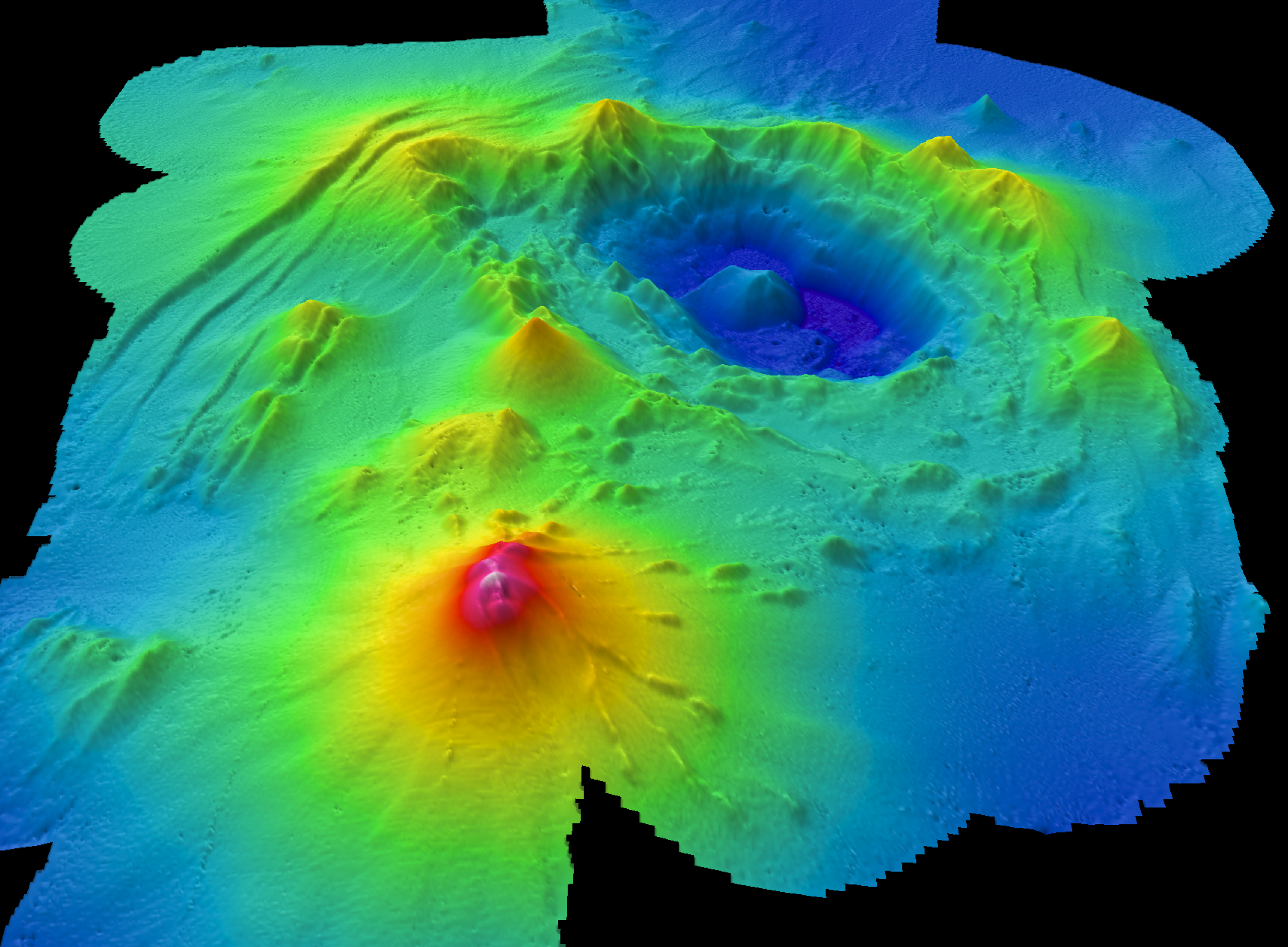
11-13-08
CORVALLIS, Ore. – Like its terrestrial cousins, the world’s most active underwater volcano goes through periods of structural building and collapsing, but new studies show that the cycles of construction and destruction are extraordinarily compressed – in a matter of years instead of millennia.
These and other observations of the Monowai Cone, north of New Zealand, were reported recently in the journals Nature and Geochemistry, Geophysics and Geosystems.
William Chadwick, an Oregon State University volcanologist and principal investigator on the study, and his colleagues have been monitoring Monowai for the past decade. Between 1998 and 2004, there were nine swarms of “T-waves,” which are sound waves that indicate underwater explosive eruptive activity.
“This is the first time we have been able to document the cyclic buildup and collapse of an actively erupting submarine volcano,” said Chadwick, who works at OSU’s Hatfield Marine Science Center in Newport, Ore. “On land, we see these cycles on the order of every 100 to 10,000 years, but at Monowai we have now seen this twice in nine years. It is extraordinary.”
Chadwick said shallow submarine volcanoes may go through these cycles more frequently than land-based volcanoes because they erupt explosively and create a lot of fragmental debris that is water-saturated and unstable, and thus more prone to sliding. Collapses on land tend to be larger and thus less frequent.
The findings are important, the researchers say, because volcanic eruptions and collapses can generate tsunamis.
“There is something mysterious about submarine volcanoes because it is hard to see what they are doing with all that water in the way,” Chadwick said, with a laugh. “When a volcano erupts on land, it’s obvious because everyone can see it. Because these underwater volcanoes are mostly hidden from our observation, we know a lot less about how active they are, how they behave, and how they are different from volcanoes on land.”
The scientists’ repeated sonar mapping of the Monowai Cone has allowed them to detect major changes in its shape over time. They learned that there was another large collapse of the volcano some time between 2004 and 2007, yet no anomalous T-waves were recorded – though that may be due to limitations of the monitoring system, Chadwick noted.
“The size of the events we have seen thus far at Monowai are relatively small and probably created tsunami waves no bigger than a few meters high, which dissipated over distance,” Chadwick said. “But we don’t know how big these collapses can get, or how large a resulting tsunami might be. I doubt that in nine years we’ve seen the full size range of eruptions and collapses.
“But that just underscores the importance of better monitoring of these undersea volcanoes, because the impacts could be significant,” he added.
Chadwick has published several studies in Nature and other journals on undersea volcanoes and was part of a scientific team that in 2004 became one of the first research efforts to observe the eruption of an underwater volcano. (http://oregonstate.edu/dept/ncs/newsarch/2004/May04/mariana.htm)
About OSU's Hatfield Marine Science Center: The center is a research and teaching facility located in Newport, Ore., on the Yaquina Bay estuary, about one mile from the open waters of the Pacific Ocean. It plays an integral role in programs of marine and estuarine research and instruction, as a laboratory serving resident scientists, as a base for far-ranging oceanographic studies and as a classroom for students.Mark Floyd,
541-737-0788
Bill Chadwick,
541-867-0179

This three-dimensional view of Monowai Volcanic Center from the south shows the location of Monowai Cone (lower left) on the southern rim of Monowai Caldera (upper right). The colors in the image are a function of seafloor depth (reds are shallowest, blues are deepest). Figure created by Susan Merle, Oregon State University.
News and Communications
Oregon State University
416 Kerr Administration Bldg.
Corvallis, Oregon 97331
541-737-4611
![]() Contact us
Contact us